
Mini greenhouse: what is it for? How to use it?
All our tips!
Contents
Mini-greenhouses make it easy to create a microclimate favourable to sowing and cuttings, helping save time and increase chances of success. They help retain heat and humidity, thereby accelerating germination and rooting of young plants. If you regularly carry out your own sowing, buying a mini-greenhouse is a worthwhile option to consider! It saves time and allows sowing in advance when garden is still too cold. Seedlings develop in ideal conditions and thereby strengthen before being planted outdoors. Similarly, some plants are more demanding than others, more difficult to germinate, and a mini-greenhouse will therefore be a valuable aid! Whether germinating seeds of vegetable plants, perennial plants, or tropical plants… mini-greenhouses are truly advantageous. There are different models, from compact to larger, with or without heating option… Discover how to choose the right mini-greenhouse and all our tips for using it!
What are the advantages of a mini greenhouse? What is it used for?
Mini greenhouses create an environment favourable to the growth of sowings and cuttings. Indeed, heat, humidity and light are ideal conditions for germination of seeds and rooting of cuttings. Mini greenhouses are fitted with a transparent lid which lets light through well, and vents to prevent development of fungi or diseases. This avoids excessive humidity that could lead to damping-off of sowings. Mini greenhouses are sometimes also supplied with a fibre mat, placed underneath pots, which helps maintain a constant humidity level. In any case, if humidity is too high, simply ventilate.
Mini greenhouses can be used for sowing of flowers or vegetable young plants, for propagation by cuttings, for sowing tropical plants, and more generally for fragile or delicate young plants.
For vegetable young plants, this allows you to obtain young plants ready to be planted out in the garden more quickly. This saves time and will give you vegetables a little earlier in the season!
Moreover, with their compact format, mini greenhouses do not take up much space, and can easily be placed in the home or on a windowsill. This allows you, even if you do not have a proper garden greenhouse, to carry out your sowings in good conditions!
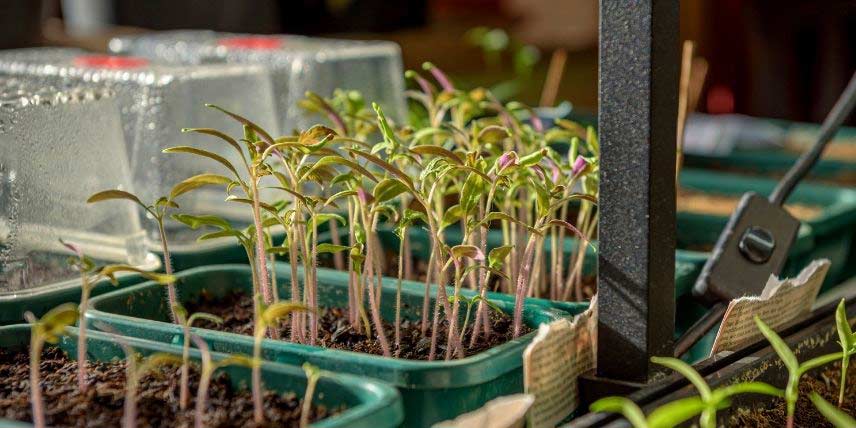
How to use a mini greenhouse?
Some mini greenhouses are fitted with alveolate trays, in which you can sow directly, while others have a simple short stem of bulb on which pots are placed.
- Fill alveolate cells or small pots with seed compost. Compost should be light, crumbly and free-draining, while retaining water well.
- Sow your seeds, then cover them with a layer of compost and water with a fine spray.
- Also remember to label your sowings or cuttings well!
- Then place the mini greenhouse in a spot with excellent light, for example behind a window, but out of direct sun to avoid overheating.
- If your mini greenhouse has a heating system, plug it into an electrical socket.
- Remember to ventilate from time to time: either by opening vents or temporarily removing the lid. This reduces risk of damping-off.
- Compost should remain slightly moist but not waterlogged. Add a little water when necessary, watering with a fine spray.
Monitor your sowings and as soon as they reach a size suitable for handling, repot them into larger pots or plant them in the garden.
If you move your young plants outdoors, harden them off gradually. Beware of sudden changes in growing conditions.
Some mini greenhouses are sold with biodegradable pots or growing trays. This makes it easier to plant them directly in ground, since they do not need to be removed from the pot but simply planted with it in the soil, where it will decompose naturally. This reduces risk of damaging roots when removing the rootball from the pot.
Discover other Mini-greenhouses
View all →Available in 1 sizes
Available in 1 sizes
Available in 1 sizes
Available in 1 sizes
Available in 2 sizes
Available in 2 sizes
What precautions should be taken?
Firstly, it is important to place the mini-greenhouse in a bright spot, but without too much direct sunlight, which could scorch young plants. Likewise, avoid placing it on a radiator. Place it if possible near a window, in a conservatory or even in a proper greenhouse, or on a windowsill (some models are designed for that!)
It is also important to avoid excess humidity, and to ventilate from time to time… otherwise fungi may develop. There is a particular risk of damping-off: a fungal disease that attacks young seedlings. Even if some mini-greenhouses have vents, don’t hesitate to remove the lid completely at times to ventilate well! Also avoid foliage touching the walls of the greenhouse; it could become damaged.
For sowing and cuttings, we recommend using seed compost rather than garden soil. Its qualities (light and airy, nutritious, fine-textured, well-draining, with a good water retention capacity…) are ideal for the development of young seedlings!
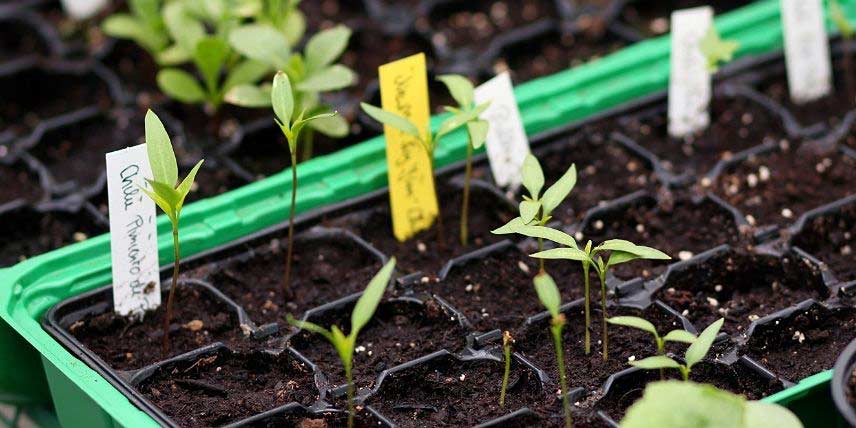
Which mini greenhouse to choose?
Choose mini-greenhouse according to size : if you do not have much space or want to place it on a windowsill, opt for the most compact models. Also choose according to features : it is important they have air vents… and some also offer a heating option! Heated greenhouses can maintain a temperature between 15 and 20 °C. This is a real advantage, saving time and allowing sowing even in winter when temperatures are low. Heating option is also useful if you install mini-greenhouse in a rather cool room. However, heated mats also exist, onto which you can place a mini-greenhouse that lacks a heating system.
Some mini-greenhouses already have alveolate plates, which you fill with potting compost, while others have a simple short stem of bulb on which pots are placed. The latter are more adaptable, since you choose in which container, pots or tubs, you sow. Generally, some are genuine miniature greenhouses, functional and adaptable, while others are more rudimentary, sometimes just an alveolate plate topped with a transparent lid.
Smallest and lowest are intended mainly for sowing, ideal for early growth of seedlings. They are often provided with alveolate plates. Larger ones are more versatile and adaptable: you can fit pots in them, and their height keeps plants sheltered for a little longer. They are also better suited to propagation by cuttings.
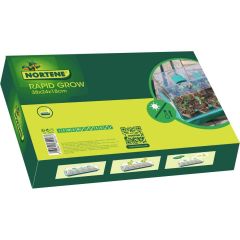
RAPID GROW Greenhouse with ventilations for seedlings
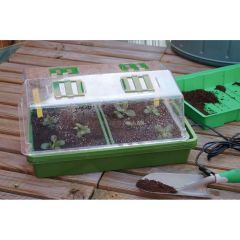
Heated mini-propagator 39 x 25 x 20 cm
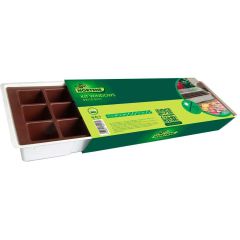
Plastic window sill greenhouse kit 49 x 15.5 cm (6in)
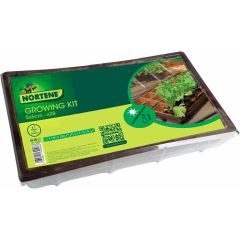
Propagator with Biodegradable Growing Kit
- Subscribe!
- Contents
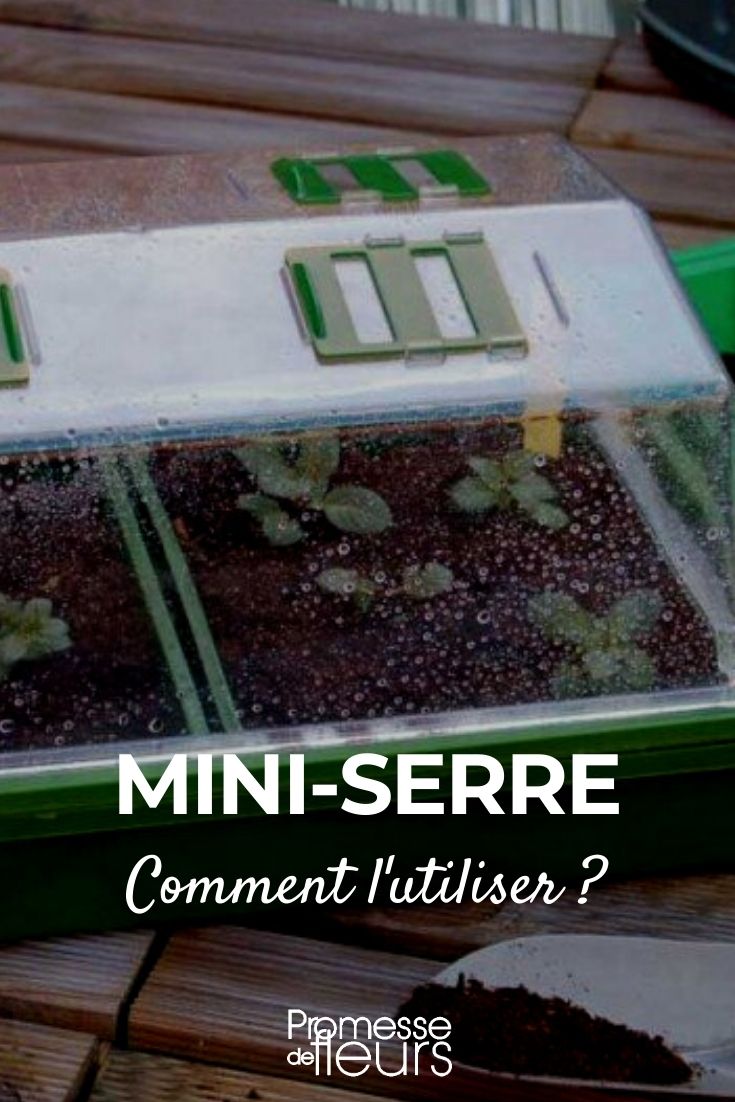


































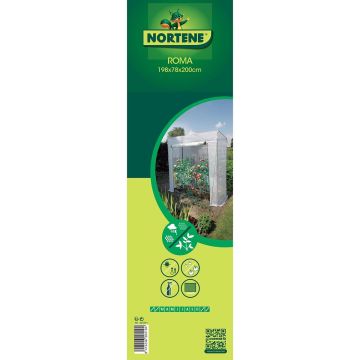


Comments